- In 2012, the government simplified procedure to obtain permission to plant oil palm in areas less than 50 hectares.
- This simplified process may have led to a ramp-up in palm oil expansion in recent years, with smaller plantations being cleared from forest near large, established oil palm plantations.
- Local governments do not monitor or have much control over land-use. In the province Orellana, the Ministry of Environment has only one forest control point for a province 21,730 square kilometers in size.
Over the past five years, the landscape of Maximiliano Moreno’s property in northern Ecuador and the air he breathes has changed. He went from being surrounded by vast forest to overlooking endless plains of oil palm. The situation prompted an agreement between Moreno and the owner of the neighboring land to reduce discharge from the plantation to his plots where he harvests cacao and breeds tilapias.
“Pollution [from oil palm cultivation] is something difficult, heavy insecticides are used, kilos of fertilizer per plant and everything is drained to the streams that cross the farm,” Moreno told Mongabay-Latam.
Moreno is a farmer and president of the Riveras del Punino community — located in the parish of Nuevo Paraíso, Francisco de Orellana (also known as Coca). Tempted by rising palm oil prices, he confessed that there was a time when he considered the possibility of working in the oil palm industry and cutting down all his fruit trees, cacao and timber inside his 30-hectare property. However, he was more interested in the conservation of his land’s vegetation and water sources. This was not the case for his neighbors, who Moreno said bought their respective 60-hectare properties to grow oil palm.

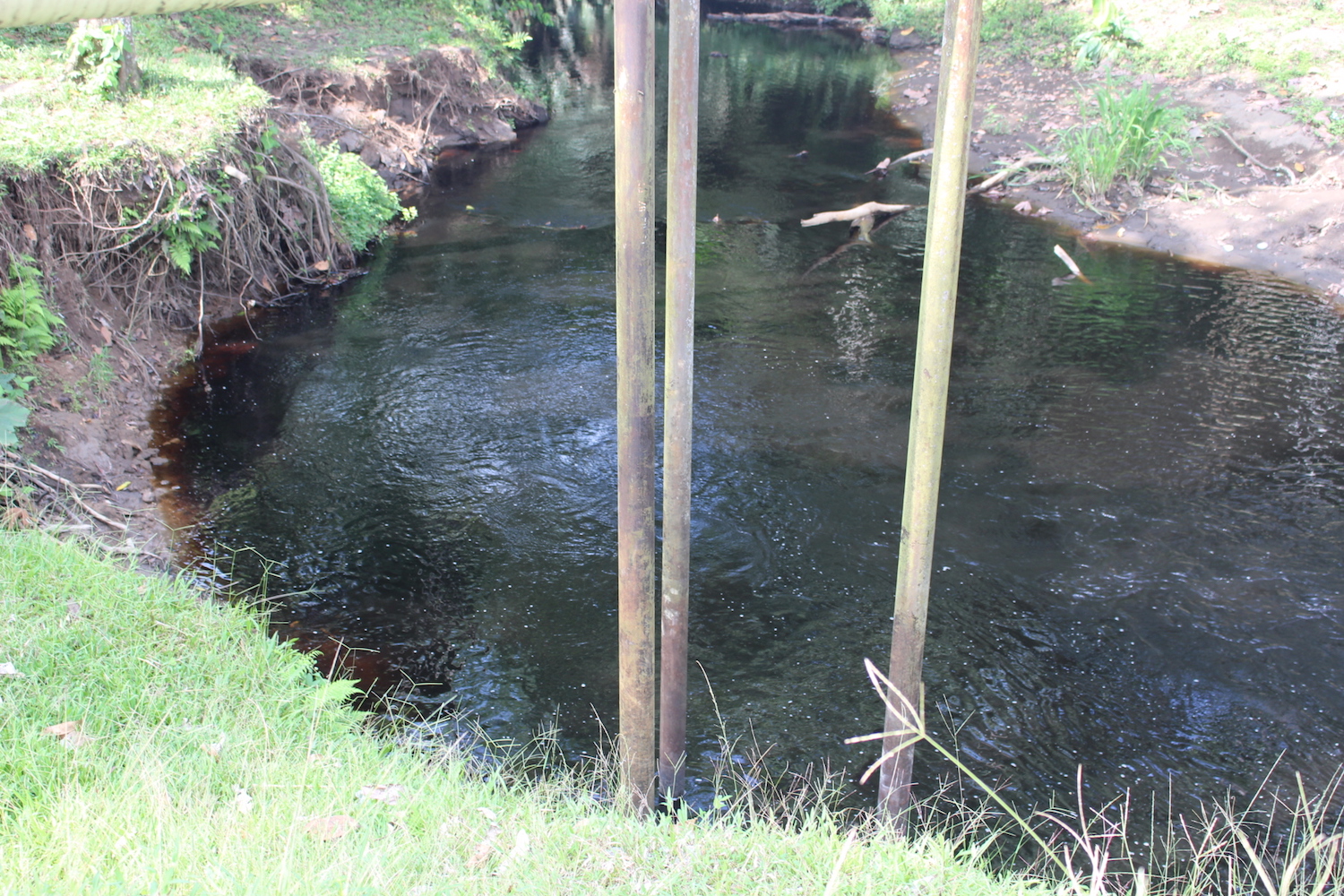
A team from Mongabay-Latam visited the rural parishes (provincial administrative divisions) of Francisco de Orellana and Sucumbíos. They found new sowings of African palm at the edge of the leading oil plantations. Local residents confirmed that patches of deforestation began appearing five years ago, which were subsequently transformed into plantations.
Produced from the fruit of the African oil palm (Elaeis guineensis), palm oil is used in a vast array of products from cookies and noodles to lipstick and toothpaste. Most oil palm cultivation takes place on vast plantations in Southeast Asia — namely Indonesia and Malaysia. But as available land there has dwindled, the palm oil industry has increasingly turned its attention to Africa and South America.
While data on the extent of oil palm cultivation in northeastern Ecuador is limited, figures referenced in Orellana’s land-use plans indicate the area used for plantations increased from 14,485 hectares in 2002 to 20,366 hectares in 2013. In the case of Sucumbíos, 25,547 hectares were used to grow oil palm by 2012. These calculations do not include the numerous, recently cleared forest patches that were observed when Mongabay-Latam toured the area in November 2016.
For Orellana, the majority of crops are found in the parish of Nuevo Paraíso, in communities such as Riveras del Punino and Agrupación Payamino, and close to an area of approximately 10,000 hectares owned by a company known as Palmar del Río (formerly Negocios NEGCORPBIS). As for Sucumbíos, most new patches are in the parishes of Limoncocha and San Roque, near where the company Palmeras del Ecuador operates their 15,000-hectare plantations.

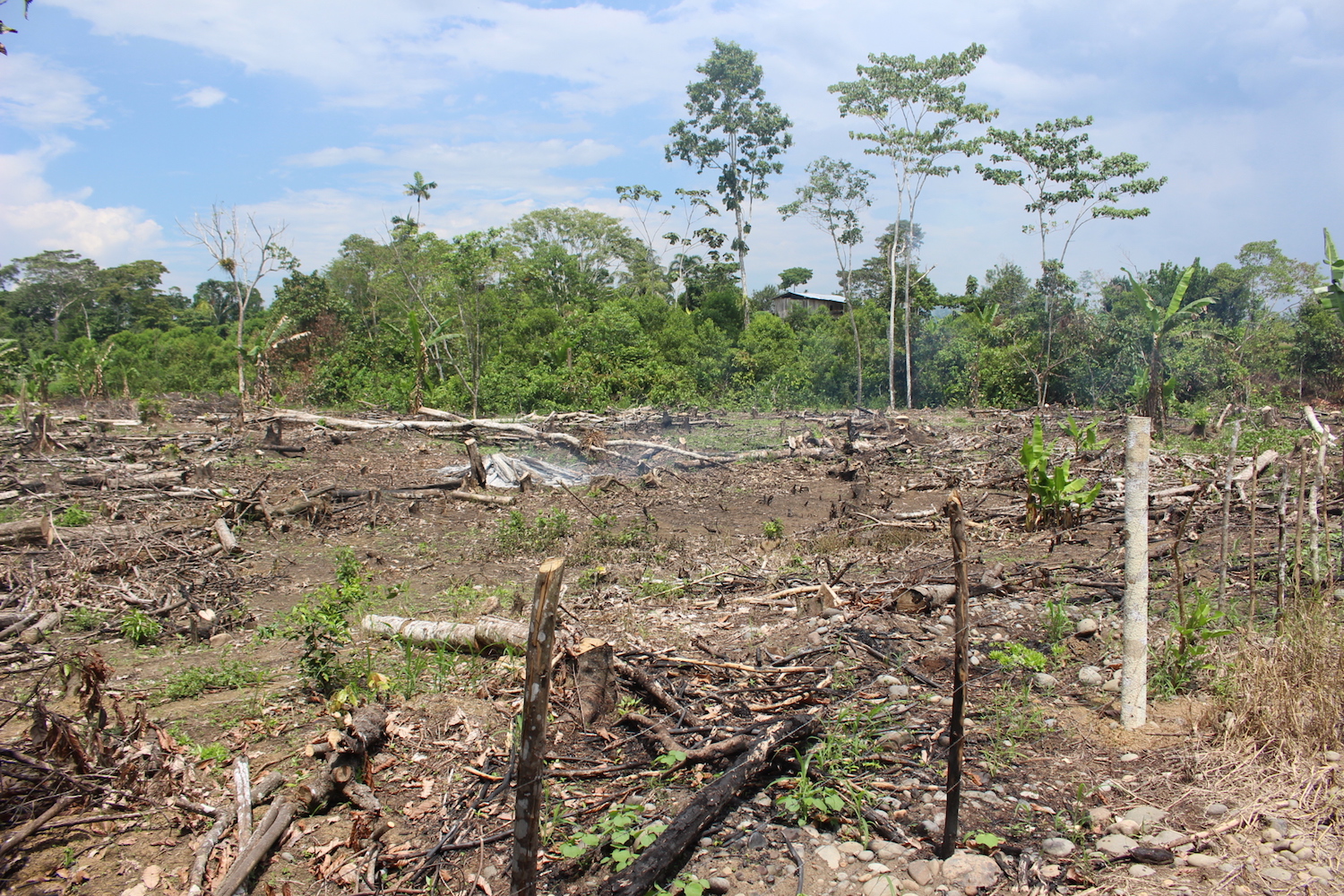
“Palm is a silent business that, for me, is more problematic than petroleum because it destroys everything. There is no vegetation, no wildlife, rivers become drainage, the need for chemicals is impressive,” said Diocles Zambrano, president of the nearby community Agrupación Payamino and coordinator of the Ángel Shingre Community Leaders’ Network.
Zambrano added that for more than a decade he had to deal with the proliferation of oil palm plantations around his property until he finally made the decision to move with his family to the provincial capital. He said there are no incentives to conserve the forest and that dozens of farmers have opted to sell their land to palm producers when they face need. In addition to oil palm, crops like banana, corn, and cocoa are also popularly grown in the region’s plantations.
Deforestation from the increase in oil palm cultivation in the northern Amazon has been addressed in the land-use plan of the region. The 2015 report describes as a “great threat” the “expansion of the territory by the company Palmeras del Ecuador, who from year to year buys land from the community landholders to expand their palm plantations. Also, it contaminates the ecosystem by adding various chemical inputs.” The report also mentions that the company Palmar del Río’s oil palm cultivation activities cause “soil and forest degradation,” and that the use of pesticides in its plantations causes “poisoning of smaller estuarine waters.”
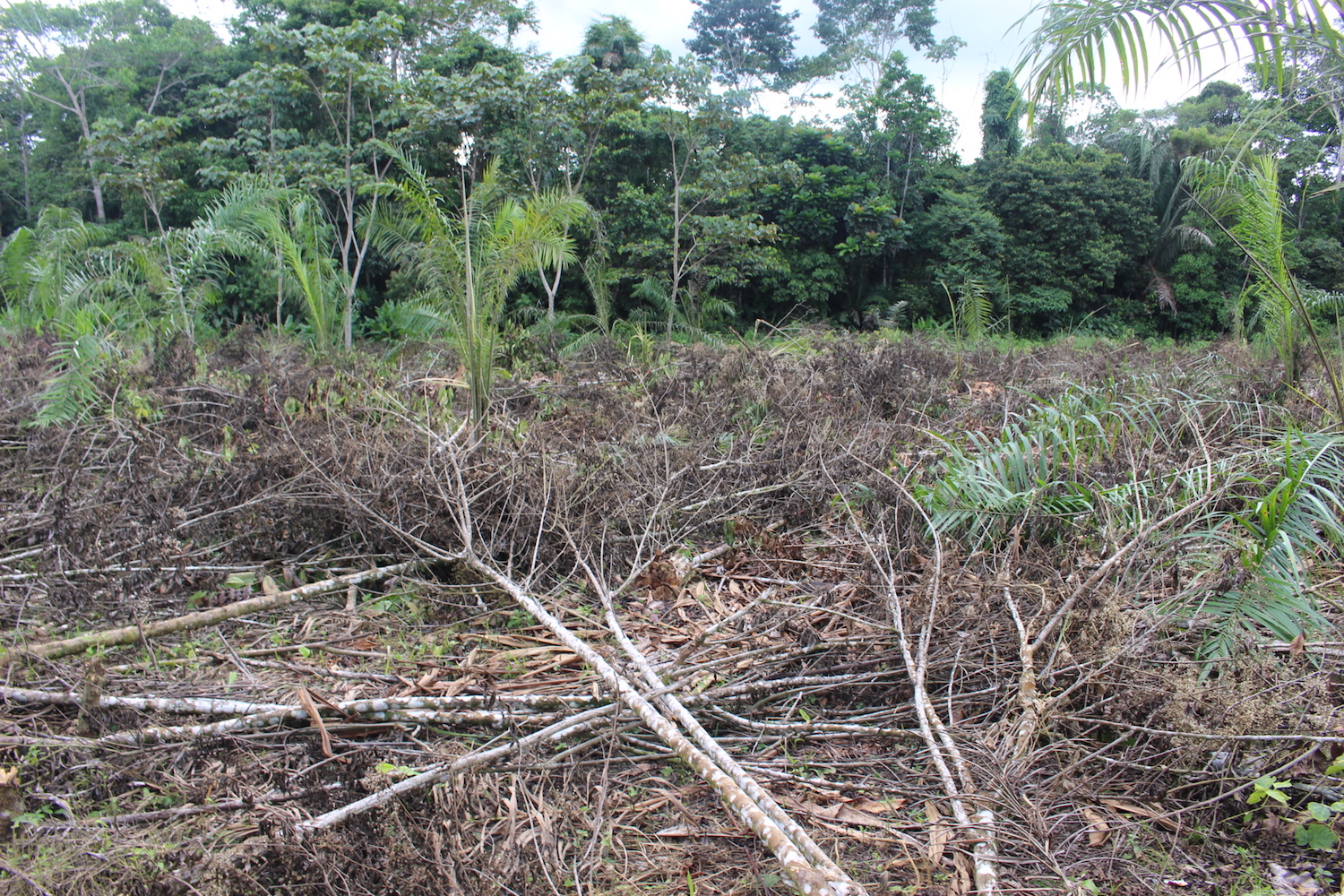
The sensitive subject of oil palm
Jon Arruti, the municipal advisor in charge of the land-use plan of Francisco de Orellana, admitted that the local government does not control or even know much about the increase in oil palm deforestation.
“Honestly, the municipality has no vast knowledge of its rural territory,” Arruti said. “[But] we have recently done a land registry and we will have a clearer picture of things.”
Arruti explained that he is in charge of granting land-use change permits, such as clearing the forest to start a palm plantation; however, in practice, those permits have no real effect. He added that farmers never felt the need or obligation to ask for land-use change permits, and the municipality has never demanded it. Farmers “have never played any role in that; it has always been a [responsibility] of the Ministry of Environment.”
Pollution from palm oil operations is also a concern in the region. Arruti recalled a recent issue with the company Río Coca (formerly Pamela), which was shut down for several days for contaminating the tributary from which local residents capture their water.
Still, he said said there are many people who live off oil palm and do not want to remove the industry entirely.
“You cannot have total opposition to the palm; instead, we need more knowledge and more control,” Arruti said.
One such family that depends on oil palm is that of Carmen Bricio in the Riveras del Punino community. Five years ago, Bricio and her husband Adalberto Verdezoto spent all their savings to plant oil palm on their 20 hectares of land, clearing their forest and cacao crops in the process. They bought seedlings from the largest oil palm plantation company in the province, Palma Oriente. However, things did not turn out as they had hoped. Bricio said they lost one-third of their plantation crops to pests and the timing of their cultivation coincided with a fall in oil palm prices last year.
Today, Carmen and Adalberto, who are parents of six, continue working with their remaining palm while trying to return to cocoa cultivation. While they regret choosing oil palm, they do not regret having cleared the forest.
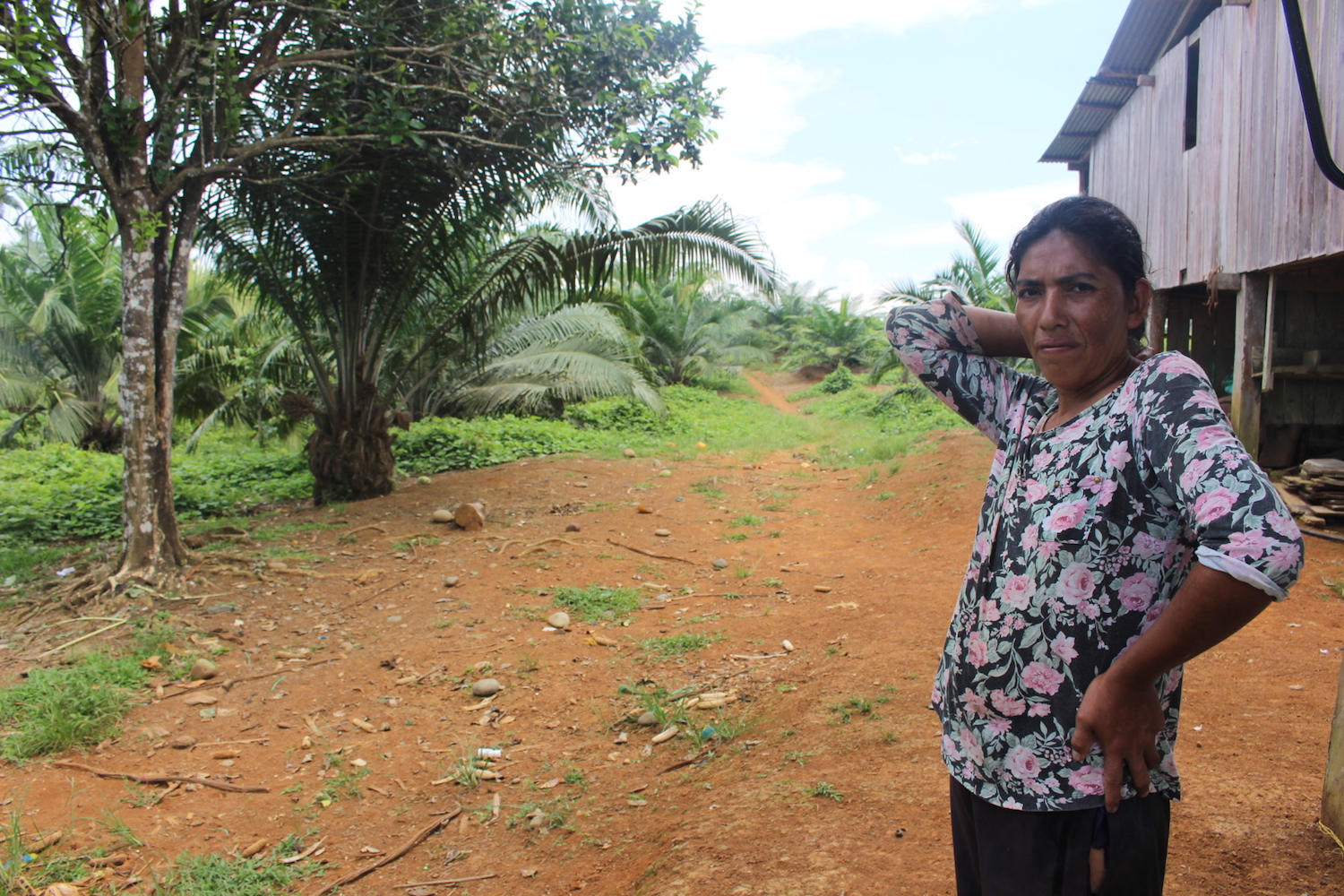
For Blanca Grefa, president of the Federation of Kichwa Communities of the Ecuadorian Amazon (FICCKAE), the picture seems quite clear: oil palm “is not a business for farmers but big companies. Previously the cultivation of palm was being encouraged by the Ministry of Agriculture, but the communities decided not to,” Grefa told Mongabay-Latam. She added that what mattered most to them was the conservation of the forest and the preservation of their territories, and that Kichwa culture requires that they produce only what they need.
According to Grefa, the major land use issue affecting Kichwa communities isn’t oil palm itself, but is instead the lack of resources needed to develop the environmental management plan required by the Ministry of Environment before they can engage in activities like agricultural production and timber extraction. She said that proper zoning and mapping of their property will enable them to more effectively manage their lands.
Grefa expressed criticism of local authorities, alleging that they do not stop invaders who illegally log, hunt, fish and even mine.
“They take advantage, and no one stops them….they are impediments to the communities that have cared [for the forest] for years,” Grefa said.

Orellana’s Environment Director, Manuel Muñoz, acknowledged that while deforestation for oil palm plantations “has been perceived as something of a notorious volume,” they do not have more information about it. “That does not mean that it is not within our obligation to dig into the problem and do a more exhaustive investigation to determine how important and notorious the problem is,” he added.
Clearing and cultivation ramp up
Palm oil production in northeastern Ecuador began accelerating in 2012 when then-Minister of Environment Marcela Aguiñaga issued a ministerial agreement that simplified the environmental permitting process for oil palm cultivation. This change required that producers obtain environmental “files” instead of more restrictive licenses for developments smaller than 50 hectares.
However, Muñoz denied that such agreement led to more forest clearing.
“The original approach is that small-scale owners are given possibilities to have solutions to their problems….I clarify that it does not necessarily equate to indiscriminate logging, because there are areas where the risk is considered higher and only a 30 percent reduction in the area of forest cover is allowed,” he said.
Muñoz, who took office in August 2015, said that the process of obtaining the requisite environmental file is “theoretically rigorous.”
“When they want to make a land-use change in an area that is not a protected area but has forest that is producing vegetation cover, then the use can be partially allowed by determining what species are present….If it’s secondary or tertiary growth, which does not have a great impact on the environment, then it can be subject to an analysis to authorize [clearing],” Muñoz said.
Muñoz added that he and his colleagues are now concentrating their efforts on fighting illegal logging and timber trafficking. He said there is currently only one control point for forest management and patrolling for the province’s 21,730 square kilometers, but that they are working towards implementing two more control points.
Muñoz admitted they do not keep records of deforestation due to oil palm cultivation and that there is a great need to improve control in general. Requests for the total number of environmental files his office has dispensed for oil palm cultivation were not granted by press time.

Mongabay-Latam visited Coca and Sucumbíos, which are close to the large palm plantations of Palmar del Río and Palmeras del Ecuador, and observed what appeared to be new patches of deforestation along secondary roads that connect the region’s indigenous communities. Also nearby is a major highway recently constructed by the national government that connects this northern corner of Ecuador west the coast and north to Colombia, allowing easy transport of palm oil produced in the region.
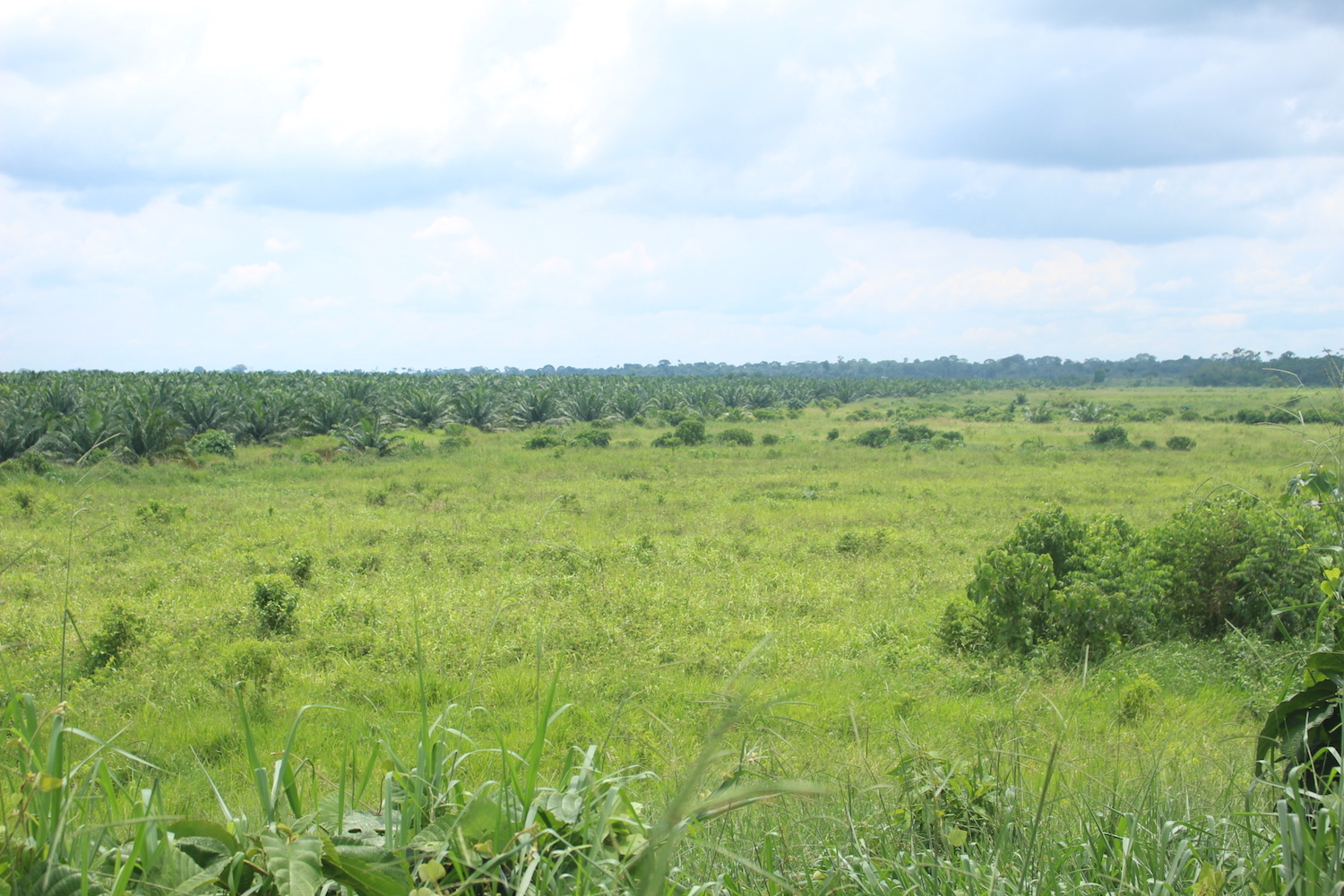
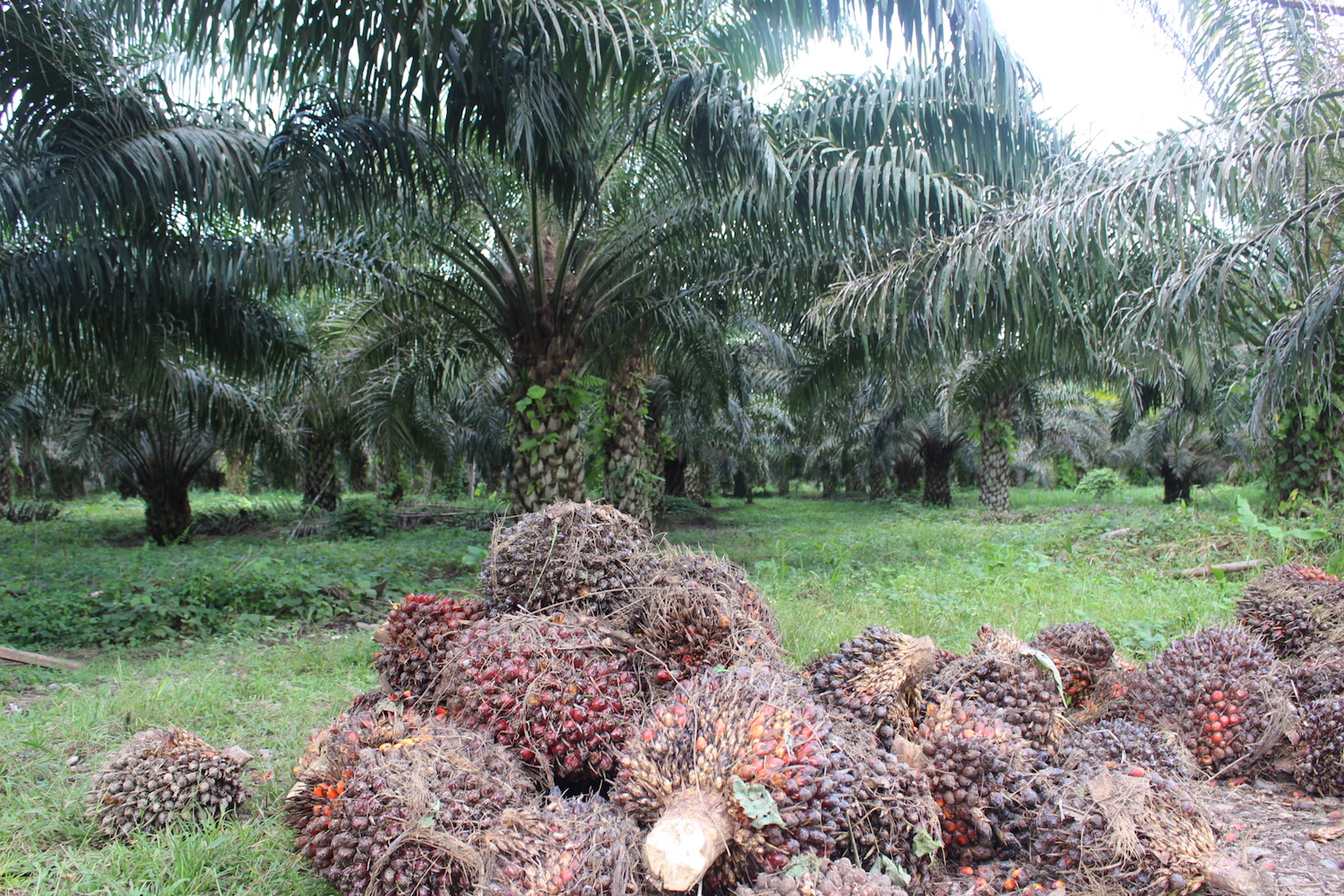
Yamanunka is the only community in Limoncocha parish where oil palm is cultivated. However, few regulations have been implemented to manage the activity.
“They have a lot of land problems and they are conflictive, so we decided not to intervene,” Silvia Yumbo, the secretary of the parish council, told Mongabay-Latam.
Yumbo said that her colleagues are not in favor of oil palm cultivation. However, other environmental concerns override palm oil production – namely, contamination of water sources from past petroleum extraction activities in the region.
Palmas del Ecuador
Palmeras del Ecuador is the company responsible for much of the oil palm production in this region of the country. However, much of the land used to produce its palm oil is privately owned and managed by smallholders. This partnership is the result of Palmeras del Ecuador’s “Inclusive Crops” program that has been promoting oil palm cultivation in the region for the past eight years.
According to Andrés Carrillo, the Chief Administrative Officer at Palmeras del Ecuador, the company becomes the guarantor of the producer through this program, and private landowners who sign on commit to planting at least 10 hectares. They company provides technical advice to its growers, and retains 50 percent of profits after harvest.

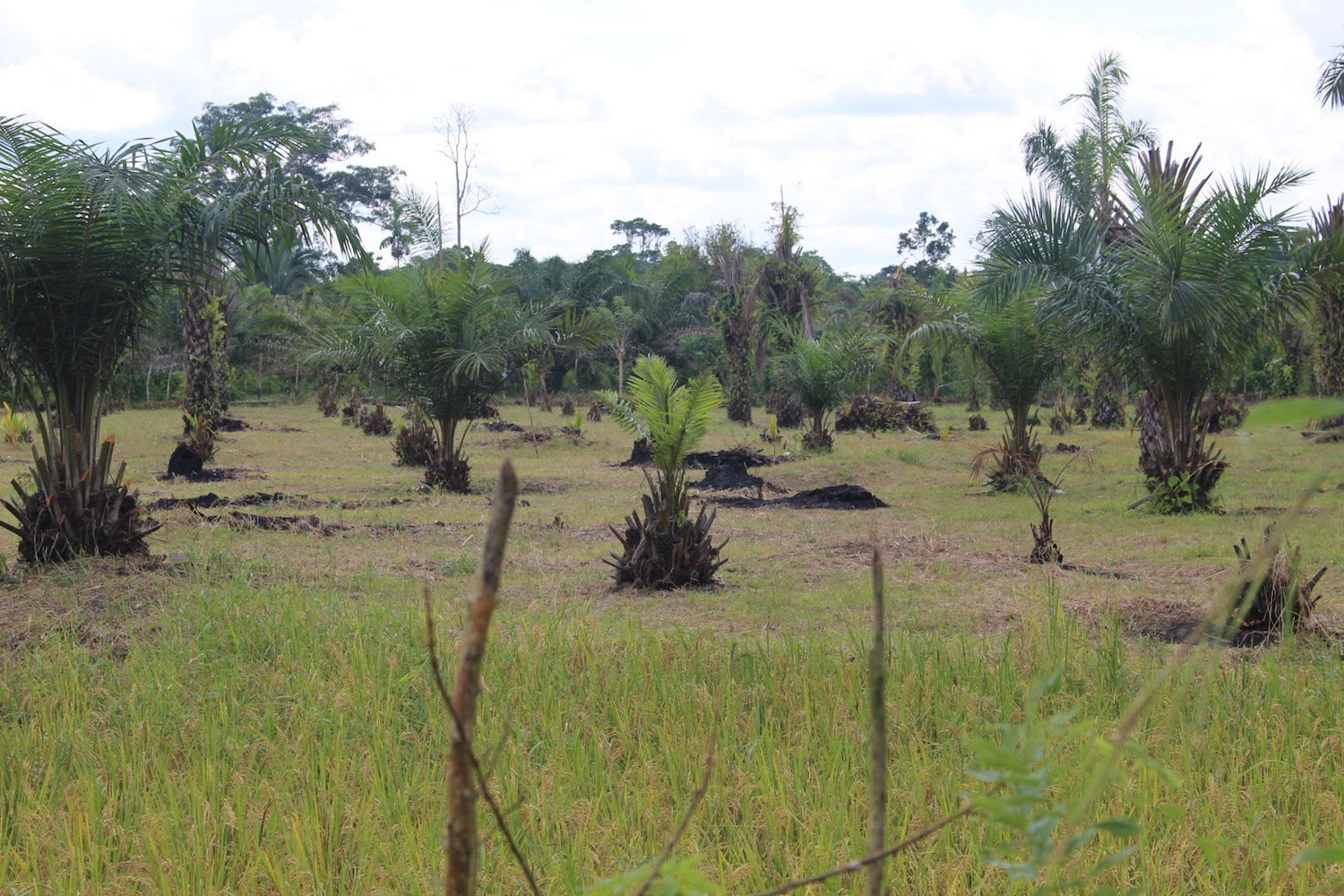
When asked if the program promotes deforestation, Carrillo said that “the only objective is that people win with their microenterprise and when the company buys their [oil palm] fruit.” He also noted that it is the responsibility of the Ministry of Environment to grant farmers environmental permits. “We are open to receiving products from all producers in the area, we have no restrictions.” He added that the company is concerned about the environment, saying that the 15,000 hectares they own includes a 2,500-hectare forest reserve.
The majority of the community members that Mongabay-Latam encountered were caretakers and not owners. However, the caretakers said that they welcome the presence of the company because of the jobs it provides. For example, in the community of Nueva Vida of the parish of San Roque, 80 percent of its 2,000 settlers work in the palm oil industry, according to Palmeras del Ecuador CEO Johnny Vera.
“[Community residents] cannot subsist off [forest] preservation,” Vera said, adding “if we have to clear the mountain, we have to do it.”
This story was reported by Mongabay’s Latin America (Latam) team and was first published in Spanish on our Latam site on November 16, 2016.
